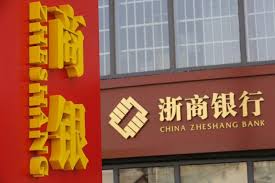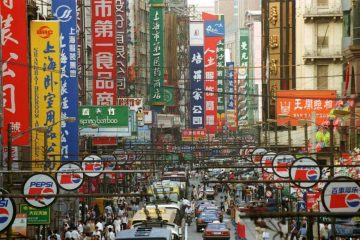China’s tighter regulation of shadow banks begins to bite

THE teller at ICBC, China’s (and the world’s) biggest bank, ushers a new, well-heeled customer into a private room. It is not for VIP treatment but a stern warning. The customer wants to invest in products offering higher returns than a basic savings account. The teller fixes a camera on her and reels off a series of questions. Are you aware that prices can go down as well as up? Do you understand that the bank does not guarantee this product? Only when the customer has been recorded saying “yes” does she get her wish.
Some complain that these videotaped agreements, now mandatory at Chinese banks selling similar investment products, feel like interrogations. But for the financial system, they are a step away from the precipice. Banks have used such transactions to channel cash into off-balance-sheet loans, serving riskier corners of the economy. Firms with little lending expertise have also muscled into the same space.
The catch-all phrase to describe this is shadow banking. It is a global phenomenon, partly a response to stricter regulation after the financial crisis of 2007-08. But China is at the extreme end. Its shadow-banking sector is vast, fuelled by a big rise in corporate debt. Estimates of its assets run from 50trn to 90trn yuan ($ 7.8trn-14trn); the middle of that range is more than three-quarters of GDP. Its growth has been dizzying, from almost nil ten years ago. Its structure is byzantine. And its pathologies have been worsened by the belief that if anything goes wrong, the government will cover the losses. The International Monetary Fund has repeatedly highlighted shadow banking as one of the big dangers to the Chinese economy.
The best disinfectant
Yet in the past year shadow banking’s seemingly unstoppable progress has all but stopped. Last year the 30trn yuan market for “wealth-management products” (WMPs), a main conduit for savings to fund banks’ off-balance-sheet loans, stalled for the first time in its decade of existence. Insurers had also been sucked in, selling short-term, high-yield products. But in 2017 sales of these fell by about half. Between 2010 and 2017 non-banks issued a third of all new credit; in the first four months of 2018 their share plunged (see chart).
The reason is much tighter regulation, ordained from the top of the political system by the economic officials around President Xi Jinping—notably Liu He, a vice-premier. A government adviser says their appraisal of the past few years is that the economy has performed well, and that all the big dangers have been outgrowths of the financial system. He pointed to three incidents that shook Mr Liu and his colleagues: the stockmarket boom and bust of 2015; the ensuing gush of capital outflows; and the reckless investments of companies such as Anbang, a disgraced insurer.
So since 2016 the focus of economic policy has been to reduce financial risks. This is not the first time these have been targeted, but Zhang Licong, an analyst with CITIC Securities, a broker, says that this campaign has been the hardest-hitting yet. The rise in corporate debt has slowed. Banks have recognised more of their bad loans, writing off about 1.5trn yuan per year. The government has merged regulatory bodies to strengthen its oversight. And it has clamped down on shadow banking.
Officials began slowly, requiring banks to video customers acknowledging the risks of WMPs, a way of forestalling disputes if they go bad. They soon turned to peer-to-peer (P2P) lending, a small, unruly segment of shadow banking. The authorities capped loan sizes and required lenders to go into partnership with custodian banks. The number of online P2P platforms has dropped from 3,433 at the end of 2015 to below 1,900 today. Then they ordered banks to reassess their own books. Many had classified large dollops of credit as investments in order to hide bad loans.
The biggest step in the clean-up came on April 27th, when regulators published sweeping new asset-management rules. Among other things these bar firms from giving punters guarantees against losses and from pooling funds to invest in bank loans. Banks will still be able to offer investment products, but they will resemble mutual funds. They have until the end of 2020 to comply, longer than first planned. Banks need the time. They are under pressure to fortify their balance-sheets with more capital. Even before factoring in the new rules, Jason Bedford, an analyst at UBS, a Swiss bank, reckons China’s banks have an equity shortfall of about 1trn yuan.
The regulators’ clampdown was overdue. Moody’s, a rating agency, says the new asset-management rules give it more confidence in China’s banking system. The biggest banks’ share prices have rallied by about a third since the start of 2017, in part reflecting the easing of investors’ worries. There is, however, still far less enthusiasm for hard-charging smaller banks, which have a sketchier asset mix and a much weaker deposit base.
China’s growth has held up well over the past two years, partly thanks to a strong global economy. But the stricter rules are now starting to weigh on activity. Infrastructure investment, a pillar of growth, has slouched to its slowest since 2012. Liquidity is also tightening. Annual growth in the broad M2 gauge of money supply has slowed sharply, to 8%, the lowest in more than 30 years, and companies are finding finance harder to obtain. Since late 2016 the gap between the yields on AA-rated corporate bonds and those on top-rated government bonds has doubled to two percentage points. Borrowers have defaulted on 20bn yuan of bonds in 2018, up by nearly a third from a year ago, though still just 0.1% of the overall market.
The question is whether China will flinch as the pain mounts. In the stop-go style of the past decade, supervisors have relaxed their grip whenever the growth toll looked too high. Banks have already been lobbying them to ease up: the extended deadline for complying with the asset-management rules is one result. “Regulators are using very strong drugs to cure an ill person,” says a manager at a Chinese bank. “If the drugs are too strong, they will create another disease.”
So far the government has paid little heed to such gloomy talk. Mr Liu, the vice-premier, said recently that investors must bear the risks for their own investments. In most countries that would sound like common sense. But in China it was taken as a hawkish sign. The cameras in the banks are not just for show.
This article appeared in the Finance and economics section of the print edition under the headline “Light on the shadows”



